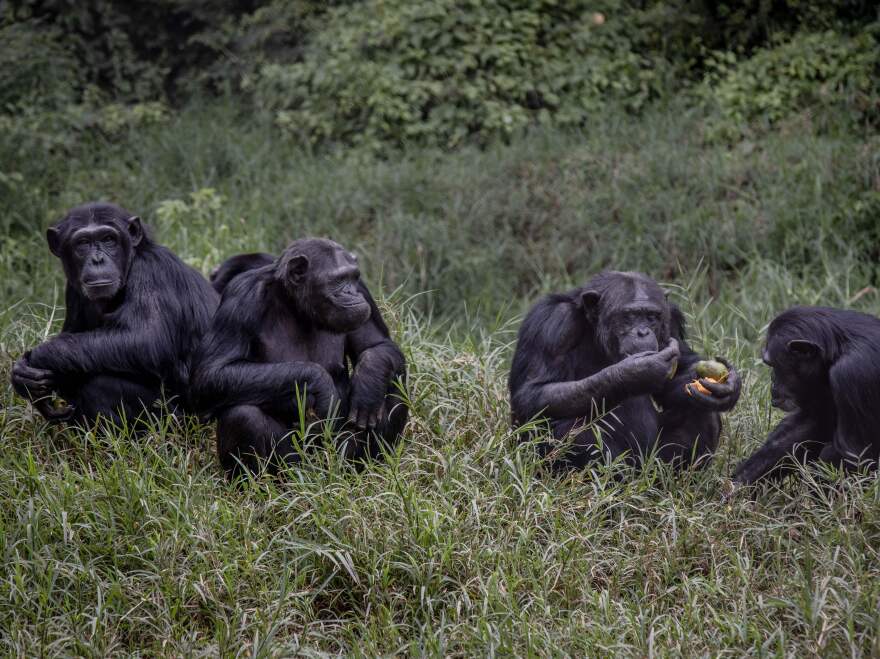Perhaps the real law of the jungle is that it's good to have friends — especially those who know where to find the the free food.
Case in point: It turns out chimpanzees and gorillas can be pals, evidently with advantages for all. That finding is from a new paper in the journal iScience that analyzes social interactions between the primate species over two decades at the Nouabalé-Ndoki Park in the Republic of Congo.
Over that 20-year period, researchers saw gorillas follow the sound of chimps to a canopy full of ripe figs, and then co-feed at the same tree. They witnessed young individuals of both species playing and wrestling with each other – interactions that can foster their development. And when bands of the two species encountered each other, researchers saw gorillas and chimps scan the others and then approach the ones they knew.
They even saw chimpanzees beating their chests – a behavior associated with gorillas.
Researchers had theorized that associations between the species could perhaps be to avoid predators such as leopards or snakes. But the apes' behavior didn't show that to be a major factor in their interactions.
"Predation is certainly a threat in this region, as we have cases in which chimpanzees have been killed by leopards," Washington University primatologist Crickette Sanz, who led the research, said in a news release. "However, the number of chimpanzees in daily subgroups remains relatively small, and gorillas within groups venture far from the silverback who is thought to be a protector from predation."
Instead, better foraging seemed to be a key upside for both species – sometimes eating at the same tree, sometimes dining nearby on different foods.
Not every interaction was warm and friendly. "Interspecific aggression was bidirectional and most frequently consisted of threats," the study notes – but it never rose to the level of lethal aggression that has occurred between chimps and gorillas in Gabon.
There is some risk from these social interactions, though: namely, disease transmission. Twenty years ago, an Ebola outbreak killed thousands of gorillas in central Africa.
The research makes a case for what can be learned over long-term study and for conservation efforts that protect the habitats where these gorillas and chimpanzees interact.
"No longer can we assume that an individual ape's social landscape is entirely occupied by members of their own species," co-author Jake Funkhouser, a PhD candidate of biological anthropology at Washington University, said in the news release. "The strength and persistence of social relationships that we observed between apes indicates a depth of social awareness and myriad social transmission pathways that had not previously been imagined."
Copyright 2022 NPR. To see more, visit https://www.npr.org.





